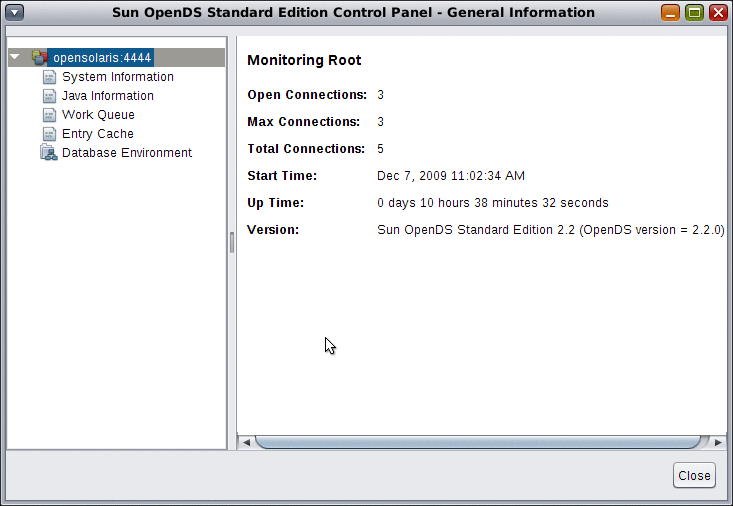| Exit Print View | |
Sun OpenDS Standard Edition 2.2 Administration Guide |

|
Starting and Stopping Your Server Instance
Configuring the Server Instance
Configuring the Proxy Components
Configuring Security Between Clients and Servers
Configuring Security Between the Proxy and the Data Source
Configuring Servers With the Control Panel
Monitoring Sun OpenDS Standard Edition
Configuring Logs With dsconfig
Configuring Log Retention Policies
To Create a Log Retention Policy
To Modify a Log Retention Policy
Configuring Log Rotation Policies
To Create a Log Rotation Policy
Logging Access Control Information
Differences Between Logging in Sun OpenDS Standard Edition and Sun Java System Directory Server
Configuring Alerts and Account Status Notification Handlers
To View All Configured Alert Handlers
Managing Account Status Notification Handlers
To View the Configured Account Status Notification Handlers
To Enable Account Status Notification Handlers
To Create a New Account Status Notification Handler
To Delete an Account Status Notification Handler
Monitoring the Server With LDAP
Viewing Monitoring Information Using the cn=monitor Entry
To View the Available Monitoring Information
To Monitor General-Purpose Server Information
To Monitor Version Information
To Monitor the User Root Back End
To Monitor the Backup Back End
To Monitor the monitor Back End
To Monitor the Schema Back End
To Monitor the adminRoot Back End
To Monitor the ads-truststore Back End
To Monitor the LDAP Connection Handler
To Monitor LDAP Connection Handler Statistics
To Monitor Connections on the LDAP Connection Handler
To Monitor the Administration Connector
To Monitor Administration Connector Statistics
To Monitor Connections on the Administration Connector
To Monitor the LDIF Connection Handler
To Monitor JVM Stack Trace Information
To Monitor the JVM Memory Usage
To Monitor the userRoot Database Environment
To Monitor Remote LDAP Servers
To Monitor a Global Index Catalog
Monitoring Using manage-tasks Command
To View the Replication Repair Logs
General Purpose Enterprise Monitoring Solutions
Monitoring the Server With JConsole
To Configure JMX on a Server Instance
Accessing a Server Instance From JConsole
Viewing Monitoring Information With JConsole
Monitoring the Server With SNMP
Configuring SNMP in the Server
To Configure SNMP in the Server
To View the SNMP Connection Handler Properties
To Access SNMP on a Server Instance
Monitoring a Replicated Topology
Monitoring Replication Status With dsreplication
Advanced Replication Monitoring
Monitoring the Proxy Server With the Control Panel
To View Proxy Configuration Information
To View Proxy Monitoring Information
Setting LDAP Data Source Monitoring Properties in the Proxy
Modifying Monitoring of Remote LDAP Servers
You can use the Control Panel to view monitoring information.
General Information
Connection Handler

